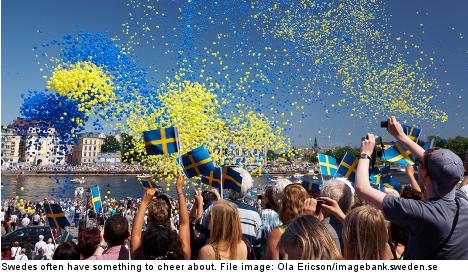The 2013 index, released on Thursday, marks the 25th year IMD has published its World Competitiveness Yearbook, which ranks how successful countries are at increasing their prosperity by managing their economic and human resources.
The United States claimed the top spot in this year’s ranking with a perfect score of 100, followed by Switzerland (93.357), and Hong Kong (92.783), with Sweden landing fourth with a score of 90.531.
Sweden received number one rankings in Management Practices, Education, and Health and Environment, with its lowest marks coming in Fiscal Policy (47) and Employment (38).
The index listed consumer price inflation, exchange rate stability, and corporate tax rates as the areas where Sweden had made the biggest improvements.
Areas where Sweden showed the biggest declines included government budget surplus/deficit, real short-term interest rates, and real GDP growth per capita.
Respondents polled for IMD’s index listed Sweden’s policy stability and predictability, effective legal environment, skilled workforce, and reliable infrastructure as key attractiveness factors of the Swedish economy.
Sweden was also recognized as one of five competitiveness “winners” for having climbed from 19th place up to 4th place since 1997, the year IMD combined rankings of developing and emerging economies.
Norway (6) and Germany (9) were the only other two European countries in the top ten, which also included Singapore (5), Canada (7), United Arab Emirates (8), and Qatar (10).
The results of the 2013 ranking reveal that Europe’s economies have “stalled” according to Stéphane Garelli, director of the IMD World Competitiveness Center, who added that structural reforms are “unavoidable” for struggling eurozone economies, but that economic growth is still key for maintaining competitiveness.
He warned over the consequences of harsh austerity measures.
“In addition, the harshness of austerity measures too often antagonizes the population. In the end, countries need to preserve social cohesion to deliver prosperity,” Garelli said in a statement.
The IMD rankings feature 60 countries and are based on statistics and assessments from business leaders. The results were comprised from a survey of more than 4,200 international executives, and revolved around four main criteria: economic performance, government efficiency, business efficiency, and infrastructure.
The Local/dl



 Please whitelist us to continue reading.
Please whitelist us to continue reading.
Member comments